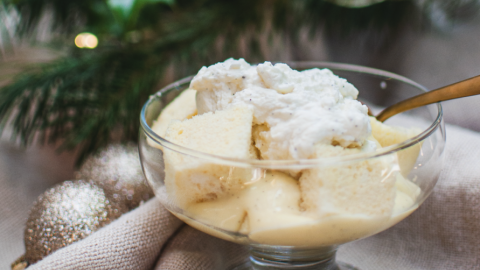Vanilla
Vanilla, with its subtle yet complex flavour, is a versatile ingredient that elevates both sweet and savoury dishes. Its best companions range from baked goods and chocolate to savoury notes like tarragon, bay leaf and even seafood—and the history of vanilla is as rich and layered as the flavour it imparts to our favourite treats.
Originating in the lush regions of Mesoamerica, vanilla was first cultivated by the Totonac people of what is now Veracruz, Mexico. This precious spice, the second most expensive in the world—right behind saffron, which also has a painstaking process to grow and cultivate—was a well-guarded secret until the Aztecs conquered the Totonacs in the 15th century. The Aztecs started blending vanilla with their chocolate drink (xocolatl), giving birth to a flavour combination that would later captivate Europe.
When Spanish conquistador Hernán Cortés encountered this luxurious flavour, he knew it was something special. By the 1520s, vanilla had made its way to Europe, where it was initially used to enhance chocolate. It wasn't until the inventive apothecary of Queen Elizabeth I crafted vanilla-flavoured sweetmeats that vanilla began to shine on its own. Like the salt of desserts, vanilla supports other flavours, bringing depth and complexity to dishes. The first known vanilla recipe didn’t appear until 1805 in “The Art of Cookery” by Hannah Glasse, who called for “vanelas” to be added to chocolate.
For centuries, Mexico held a monopoly on vanilla production due to the plant's reliance on a specific bee, the Melipona, for pollination. This changed in 1841 when Edmond Albius, a young slave on the island of Réunion, discovered a method of hand-pollinating the vanilla orchid. This breakthrough allowed vanilla to flourish in new regions, particularly in Madagascar and later Indonesia, which today account for the majority of global vanilla production.
The story of vanilla is one of perseverance, ingenuity and global influence, from its origins in the rainforests of Mesoamerica to its spread across the world. Despite its exotic roots and labor-intensive cultivation, vanilla has become a global staple, with most of what we consume today being synthetic vanillin. Yet, the allure of real vanilla remains strong, symbolizing the complex interplay between nature and culture. Whether enhancing a dessert or adding an unexpected note to a savoury dish, vanilla's rich history and its impact on global cuisine continue to captivate and inspire, making it a true treasure of the culinary world.
Variations
Madagascar Vanilla Beans (Bourbon Vanilla): Rich, creamy flavour with sweet, buttery undertones. Madagascar vanilla is the most popular variety worldwide, with its high vanillin content giving it a smooth, classic taste.
Tahitian Vanilla Beans: Floral, fruity flavour with hints of cherry, licorice and caramel. More exotic and fragrant, with a softer, more delicate flavour.
Mexican Vanilla Beans: Smooth, spicy flavour with woody undertones and hints of cinnamon, clove and cocoa. These beans add depth to both sweet and savoury dishes.
Ugandan Vanilla Beans: Strong, earthy flavour with sweet, creamy notes and a hint of milk chocolate. Particularly rich in vanillin, offering a robust flavour similar to Madagascar vanilla but with added sweetness.
Indonesian Vanilla Beans: Robust and earthy, with a smoky, woody flavour. Less sweet and more complex, often with a spicy or peppery edge.






